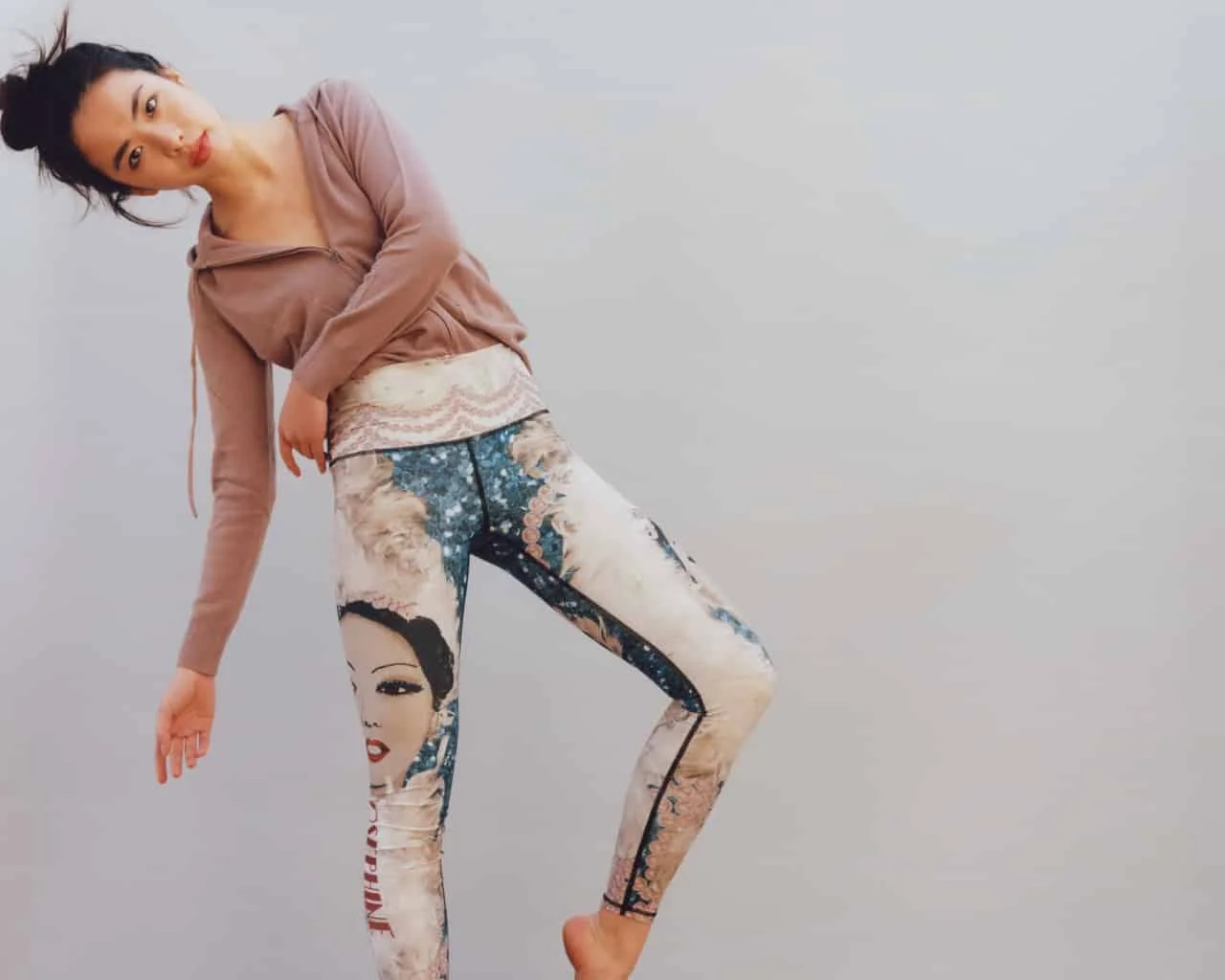The future of ethical fashion: Rêve en Vert SS17
Vyayama Kalablak Crop Top £77.50; Yoga Democracy Snake Cropped Yoga Leggings £54.
By BEL JACOBS
In 2013, Natasha Tucker and Cora Hilts launched Rêve en Vert, an online lifestyle store that aimed to combat lingering perceptions of ethical clothing with truly beautiful designs.
With backgrounds in art history and environmental politics respectively, the business duo have scooped an enviable line-up of ethical products for Rêve: from ‘re-made’ British bags by big hitter Christopher Raeburn and classic pieces crafted from organic cotton and plant-based fabrics from Svilu as well as cashmere by Ryan Roche and the totemic shapes of cult New York jeweller Pamela Love.
Other top labels include organic lingerie from half Danish, half-French loungewear label Base Range and the conceptual work of ex-Balenciaga, ex-McQueen designer Mark Kenly Domino Tan. The site recently branched into organic beauty, with products from brands Bamford, Willow Organic and Mitchell and Peach, as well as ethical activewear.
Vyayama, Teeki, Yoga Democracy, Pepper & Mayne and Manduka lead the charge against the hyper synthetic fibres found in standard sportswear. Californian brand Teeki uses fibres made of recycled plastic bottles; Vyayama's tencel garments, a sustainable alternative to nylon, is eco-awarded and certified safe for skin; Pepper and Mayne also use as many natural and ethical materials as possible.
‘What we understood early on is that we want to be in luxury,’ says Hilts. ‘By which I don’t mean big gowns at £5,000 a piece but fashion-forward pieces that people want to wear.’ I talk to the pair about ethical fashion and new season picks.
On changes in sustainable fashion:
Cora:We’ve been lucky because, even in the past three years, we’ve seen more and more designers emerge that are doing things more sustainably.
Natasha: When we first started reaching out to designers, we were asking “can you tell us about your sustainability policy?” Even three years ago, very few were touching this. Now, people say, “listen, even if we’re not perfect yet, we’re going in that direction. We recognise the need for it.” Now, it’s much more normal for people to ask where was this made, what is it made from?
Cora:What’s interesting is that, as we’ve legitimised ourselves, more designers say to us “well, we do work quite ethically, we just haven’t wanted to discuss it because it’s been associated with a tree-hugging kind of person.” It’s been two-fold. We’ve built a site that looks high end enough that other designers admit they’re paying a lot of attention to certain processes but just haven’t want to associate with this movement before.
On transparency
Cora:We have our own ethical policies. On every item, you can see how the designer is sustainable, how the product itself is sustainable. What we’re trying to work out is a clear labelling system with icons so, if something is organic or fair-trade or uses less water, we’ll be able to mark that on the items and let people search through that.
On where to find great sustainable design
Cora: 'We get a lot from the States - and Copenhagen has been a gold mine. Scandinavians really get it. They inherently produce sustainably. British designers like Christopher Braeburn have been incredible. We’re starting to talk more to people in Asia and India where there’s an incredible amount of craftsmanship. For us, it’s important to visit our designers and look at their studios and production which is why we haven’t gone into Asia yet. But there’s lots of people in Hong Kong and Japan going down that route.'
On new awareness
Natasha: ‘Education is the beginning. And there’s growing demand from consumers to know things about products. We live in a world with so much access to information. When you’ve [get] this information and discover things aren’t very good or positive, well, ultimately, no one wants that. It’s an awareness of what we’re doing to ourselves, our bodies and the planet. We’re having to face big conversations with issues like climate change. Whilst fashion has been slower, there’s an inevitability that it will have a trickle-down effect.'
On Rana Plaza
Natasha:'It was the first time fashion was made into a human issue. And Fashion Revolution has done an amazing job of marking the anniversary and not letting people forget it.'
Cora:'It was the first time something had happened on such a global scale that was specifically fashion-related.'
On developing and growing
Natasha:'The whole point of Rêve en Vert was not preaching to a choir. We want to reach girls who shop at Selfridges or Harvey Nichols and Harrods and show that you don’t have to sacrifice style for ethics. You can look good and live a cosmopolitan life but dress more sustainability and ethically. One of the hardest things we’ve had to do is say no to designers who are very ethical and put a tremendous amount of time into that story but [produce] a cliched version of sustainable fashion. The other thing we've learnt .... We always wanted to sell green designers but the other side of that conversation was how do we create a truly green company? That’s been interesting in terms of making decisions about packaging, carbon neutral shipping options, etc.'
Cora: 'Things have come up like shipping or people asking, how do you invest? We buy seasonally so how is that sustainable? So we rework our buys to bring in the most timeless, elegant pieces for each season. We keep everything on the site till it sells. We don’t purchase products we think will go out of fashion. The sustainability and the aesthetics have developed side by side into something we’re very comfortable and hope to be able to grow.'


